solution Use Case
Event monitoring: no-code monitoring application for effortless live event operations
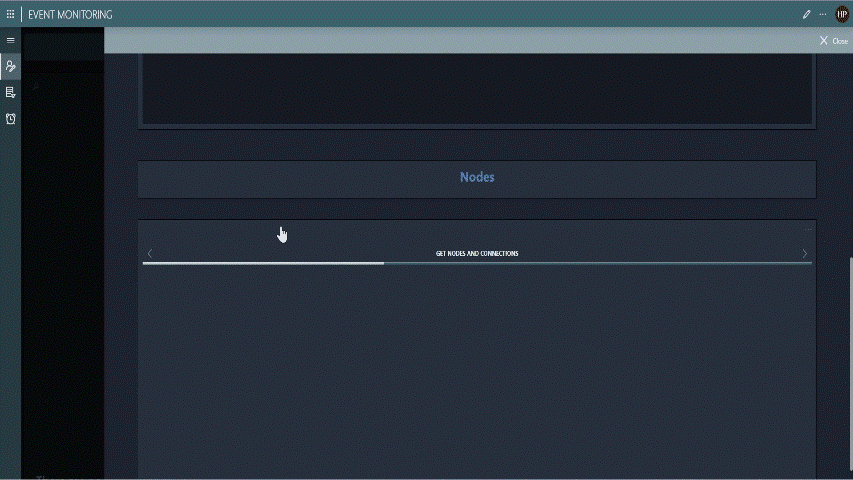
Live event management demands seamless coordination across multiple resources, devices, and services, often in dynamic and time-critical environments. The Event Monitoring application was developed as a no-code, user-configurable solution that empowers event operators to manage event infrastructure effortlessly without technical support or engineering intervention.
This application enhances operational efficiency, simplifies configuration, and centralizes monitoring across events—without the need for manual backend work or custom coding. It drastically reduces time and effort while promoting data-driven, future-ready operations.
By abstracting the complexity behind service creation, device integration, and event-specific monitoring, operators gain complete visibility and control, making this solution ideal for broadcasters, production teams, and media service providers.
Key success highlights
- Empowering operators with no-code monitoring solutions: Seamlessly design and manage monitoring workflows without development effort.
- User-driven configuration: Operators can define what they want to monitor (protocols, devices, parameters) without any coding knowledge.
- Streamlined visualization: Significantly reduces dependency on traditional Visio diagrams by offering real-time, visual insights.
- Cost and effort efficiency: Cuts down development time, configuration resources, and ongoing labor costs.
- Data-driven architecture: Built on existing DataMiner resources to maximize value and avoid duplication.
- Scalable deployment: Modular packaging allows smooth deployment across multiple DataMiner clusters.
- Third-party integration: Connect effortlessly with external systems like scheduling and monitoring platforms.
- Centralized alerts: Consolidated and prioritized alerting mechanism boosts operational response time.
Monitoring live events like UEFA matches ⚽
The primary goal of this solution is to ensure uninterrupted, real-time monitoring of all devices used in live event broadcasts—covering everything from video and audio feeds to signal chains and device health.
Capabilities
- Real-time monitoring: Continuously fetches live data from DataMiner and notifies operators of critical alerts.
- Cross-region device visibility: Supports multi-country device monitoring (e.g. UK, Italy), enabling centralized control for globally distributed systems.
- Fully configurable parameters: MCR teams can define exactly what to monitor—ensuring highly relevant alerting and data capture.
USE CASE DETAILS
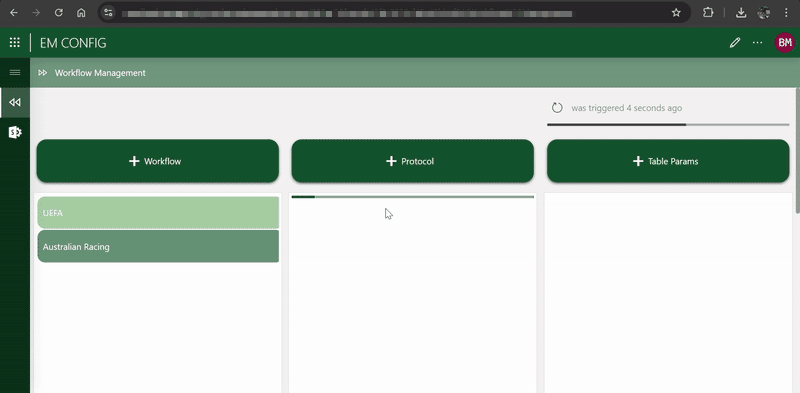 1. EM Config application
1. EM Config application- Workflow page: Create workflows, assign protocols, and select specific parameters for monitoring.
- Settings page: Define DataMiner Agents (DMAs) for deployment and set thresholds for maximum events per DMA.
- Service page: Visualizes all live services with real-time alarm states, including filtering by alarm status, workflow type, and location. Double-clicking a service reveals its underlying monitored parameters.
- Resource page: View all configured workflows and their respective monitored parameters.
- Alarm Console: Centralized overview of alarm statuses across all events for fast triaging.
- Spectrum Analyzer Integration:
- Auto-setup based on event demodulator configurations.
- Live trace inspection.
- Infrastructure replicated in DataMiner for full traceability.
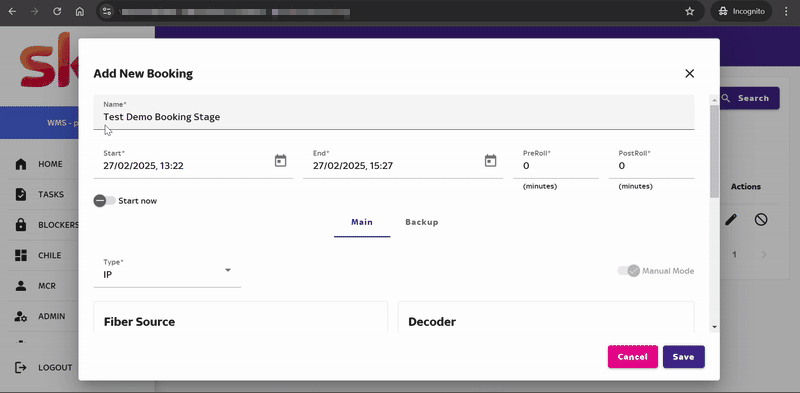 Demonstrating the workflow step by step: Setting up monitoring
Demonstrating the workflow step by step: Setting up monitoring1. Configure parameters
- Create the workflow in the EM Config application.
- Add the relevant protocols and table parameters.
- Choose whether each parameter should be displayed on the Resource or Service page.
- Use WMS to create a booking with start/end time, decoder, and demodulator inputs.
- Booking automatically creates the corresponding service entry in DataMiner and the low-code monitoring UI.
- After a short sync period, real-time values and alerts start updating every 30 seconds.
- Monitoring auto-stops after the event's end time.
- POST and DELETE requests can simulate booking flows for integration testing or manual entries.
 Advanced feature: node edge graph for protocol connectivity
Advanced feature: node edge graph for protocol connectivityVisualizing device connections
This innovative visualization tool automatically builds connection graphs based on protocol relationships:
- Connect protocols by defining destination targets in the EM Config app.
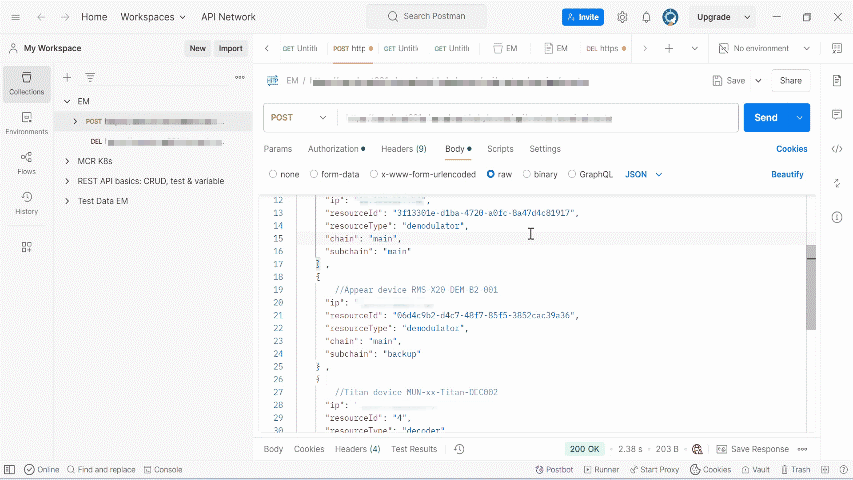
- Connections auto-resolve into main chains, back-up chains, and subchains.
- Devices default to "main" if chains/subchains are undefined.
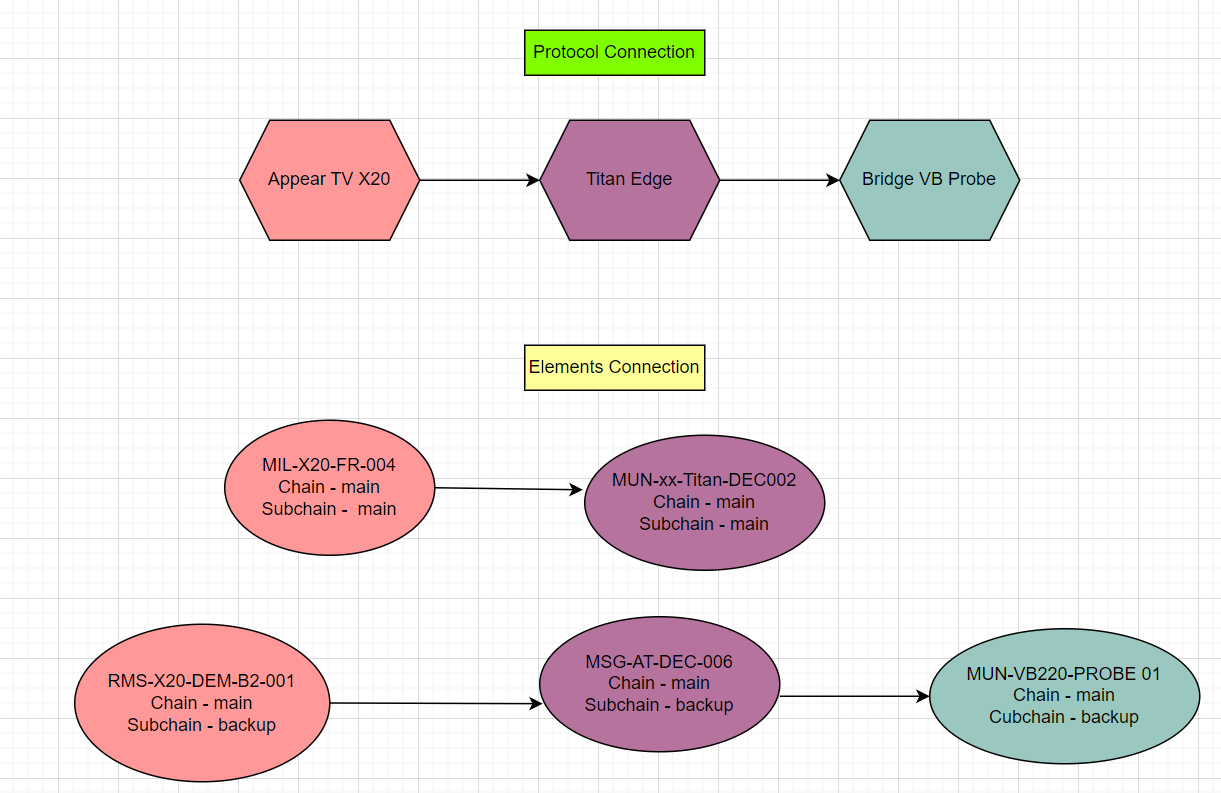
 Maintaining and updating connections
Maintaining and updating connections- Automatic updates: Device additions, edits, or deletions in event definitions dynamically update connection graphs.
- Manual editing: Modify protocol connections directly within the EM Config app to restructure device relationships visually.
Conclusion
Our no-code event monitoring solution is a game-changer for operational teams. By removing the technical barriers of traditional monitoring systems and introducing a modular, data-driven approach, we've delivered a solution that's easy to use, highly scalable, deeply integrated, and ready for the demands of next-gen broadcast operations.